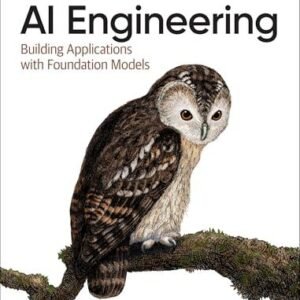In the rapidly evolving landscape of technology, few advancements have captured the imagination quite like deep learning. This subset of artificial intelligence, inspired by the neural networks of the human brain, has transformed industries by automating complex tasks, enhancing decision-making processes, and unlocking insights from massive datasets. From healthcare and finance to autonomous vehicles and creative arts, deep learning models have made significant inroads, demonstrating their versatility and power. In this article, we will delve into the myriad real-world applications of deep learning, showcasing how these sophisticated models are not only reshaping businesses but also enhancing everyday life. Join us as we explore innovative use cases, the impact of these technologies, and what the future holds for deep learning in our increasingly digital world.
Table of Contents
- Understanding Deep Learning Models in Industry Contexts
- Transforming Healthcare with Predictive Analytics
- Enhancing Customer Experience through Natural Language Processing
- Driving Innovation in Autonomous Systems with Computer Vision
- Closing Remarks
Understanding Deep Learning Models in Industry Contexts
Deep learning models have transformed numerous industries by providing innovative solutions to complex problems. These models, built on artificial neural networks, have shown remarkable capabilities in tasks such as image recognition, natural language processing, and predictive analytics. For example, in the healthcare sector, deep learning is utilized for diagnosing diseases from medical images, predicting patient outcomes, and even personalizing treatment plans. Likewise, in finance, algorithms analyse vast amounts of transactional data to detect fraud, forecast market trends, and enhance risk management strategies. As various sectors embrace these technologies, the performance and reliability of deep learning models continue to improve, leading to greater efficiency and effectiveness in operations.
To implement deep learning successfully, organizations often rely on a combination of tools, frameworks, and methodologies. Key components include:
- Data Preprocessing: Cleaning and normalizing data to ensure quality input for training models.
- Model Selection: Choosing appropriate architecture based on the specific use case, whether it’s CNN for image tasks or RNN for sequence analysis.
- Training Techniques: Utilizing techniques such as transfer learning and augmentation to enhance model performance with limited datasets.
Additionally, it’s essential to understand the deployment environment where these models will operate. Below is a concise overview of some prevalent industries utilizing deep learning:
| Industry | Application |
|---|---|
| Healthcare | Medical imaging diagnostics |
| Automotive | Autonomous vehicle navigation |
| Retail | Personalized recommendations |
| Marketing | Customer sentiment analysis |
Transforming Healthcare with Predictive Analytics
In recent years, the integration of predictive analytics into healthcare has streamlined processes and improved patient outcomes dramatically. By leveraging deep learning models, healthcare professionals can analyse vast amounts of patient data to identify patterns that were previously invisible. These models not only enhance decision-making but also enable early intervention strategies that lead to better health management. Some real-world applications showcasing this transformation include:
- Patient Risk Stratification: Identifying high-risk patients through predictive algorithms, allowing for tailored care plans.
- Operational Efficiency: Optimizing hospital resource allocation by predicting patient admission rates and treatment needs.
- Disease Prediction: Forecasting disease outbreaks and patient conditions based on historical data trends.
Furthermore, predictive analytics can support personalized medicine by tailoring treatments based on individual patient profiles. By combining genomics with patient data, healthcare providers can create customized treatment plans that improve efficacy and minimize adverse effects. The ability to anticipate future health issues not only empowers clinicians but also engages patients in their own care journeys. Below is a simple illustration of how predictive analytics can enhance various areas of healthcare:
| Application | Benefit |
|---|---|
| Chronic Disease Management | Better adherence to treatment regimens |
| Readmission Prediction | Reduced hospital readmission rates |
| Clinical Decision Support | Informed decision-making with real-time data |
Enhancing Customer Experience through Natural Language Processing
Natural Language Processing (NLP) has become a cornerstone for enhancing customer experience across various industries. By leveraging advanced algorithms and deep learning techniques, businesses can analyse customer interactions more effectively, leading to a more personalized service. Key applications include:
- Sentiment Analysis: Understanding customer emotions through their feedback allows companies to tailor responses and improve satisfaction.
- Chatbots and Virtual Assistants: These AI-driven tools provide instant support, answering queries 24/7, which significantly enhances user experience.
- Content Recommendation: By analyzing user preferences, businesses can suggest products or services that resonate with each individual, increasing engagement and sales.
Moreover, the power of NLP extends to the automation of customer service tasks, resulting in efficient resolutions. For instance, integrated ticketing systems utilize NLP to classify and prioritize queries, enabling quicker response times. A snapshot of common NLP applications in customer service can be illustrated in the following table:
| Application | Benefit |
|---|---|
| Sentiment Analysis | Improved customer insights |
| Chatbots | 24/7 availability |
| Smart Routing | Fast resolution times |
| NLP Analytics | Data-driven decisions |
Driving Innovation in Autonomous Systems with Computer Vision
The integration of computer vision in autonomous systems is revolutionizing how machines perceive and interact with their environments. By employing deep learning models, these systems can swiftly analyse vast amounts of visual data, enabling them to recognize patterns, detect obstacles, and make real-time decisions. This transformative technology underpins various applications, from self-driving vehicles to robotic manufacturing. Some key benefits include:
- Enhanced Safety: Real-time object detection minimizes the risk of collisions.
- Increased Efficiency: Autonomous systems can optimize routes and reduce operational costs.
- Robust Adaptability: Advanced algorithms allow for improved learning and adaptation in dynamic environments.
The implications of these advancements are monumental, particularly in sectors such as transportation, agriculture, and healthcare. For instance, autonomous drones equipped with computer vision are capable of conducting aerial surveys, while robotic arms in manufacturing utilize deep learning to ensure precision in assembly lines. To showcase the current landscape of applications, consider the table below highlighting notable use cases and their corresponding industries:
| Application | Industry |
|---|---|
| Self-Driving Cars | Automotive |
| Precision Farming | Agriculture |
| Remote Surgery | Healthcare |
| Manufacturing Robotics | Industry |
Closing Remarks
the journey through the real-world applications of deep learning models reveals not only their transformative potential but also the complexities that come with integrating these technologies into various sectors. From healthcare and finance to autonomous systems and creative industries, deep learning is reshaping how we approach problem-solving and innovation. As we continue to explore and push the boundaries of what these models can achieve, it is crucial for stakeholders—researchers, practitioners, and policymakers—to collaborate and address the ethical considerations and challenges that arise.
By fostering an environment of responsible development and deployment, we can ensure that the benefits of deep learning are maximized while minimizing any unintended consequences. As we move forward, staying informed and adaptable will be key as this dynamic field continues to evolve. We invite you to share your thoughts and experiences with deep learning in the comments below, and let’s keep the conversation going!
Thank you for joining us on this exploration of deep learning’s real-world applications. Stay tuned for more insights into the future of technology and innovation!





